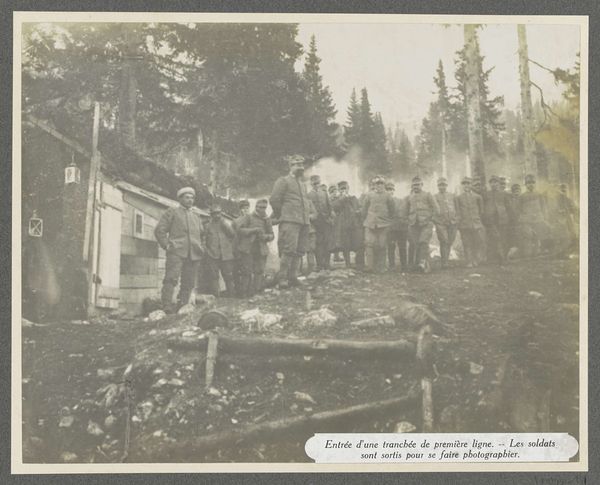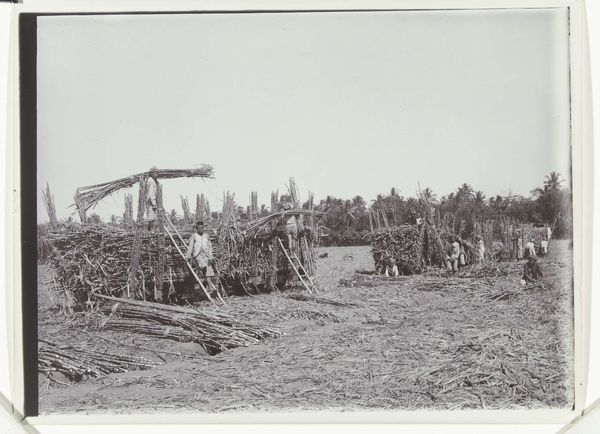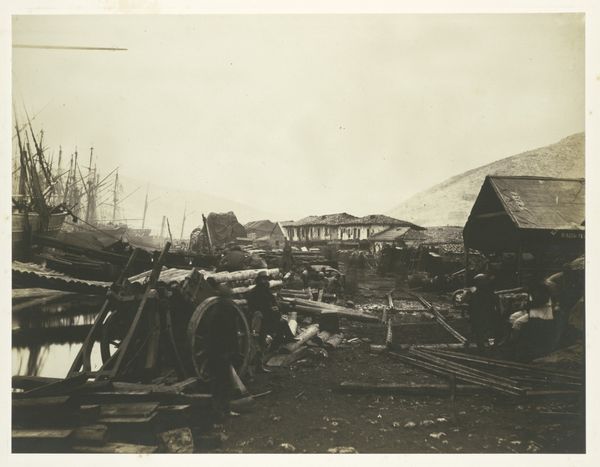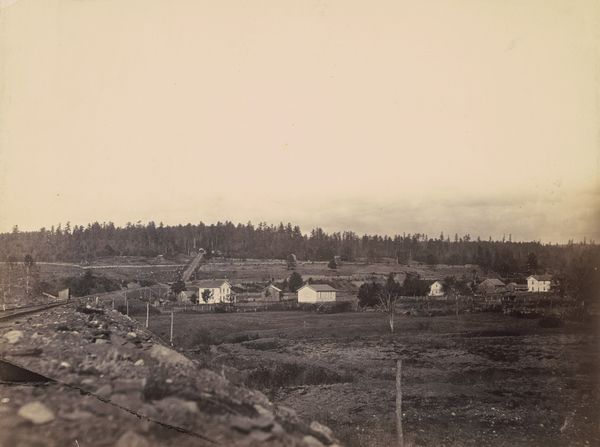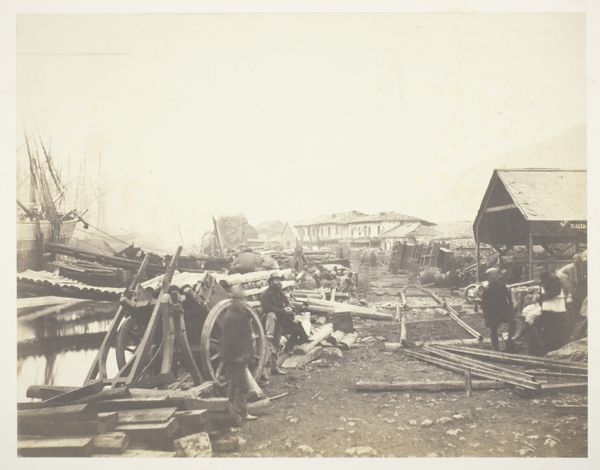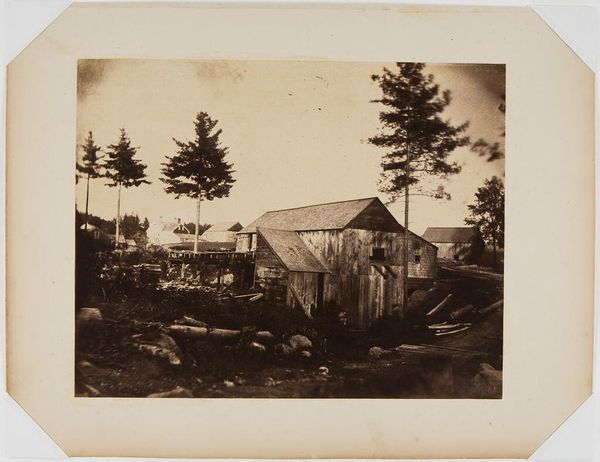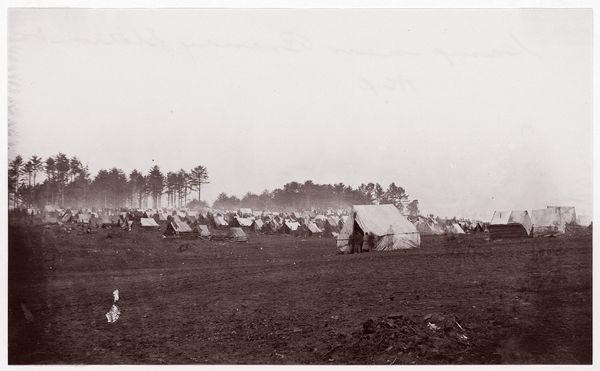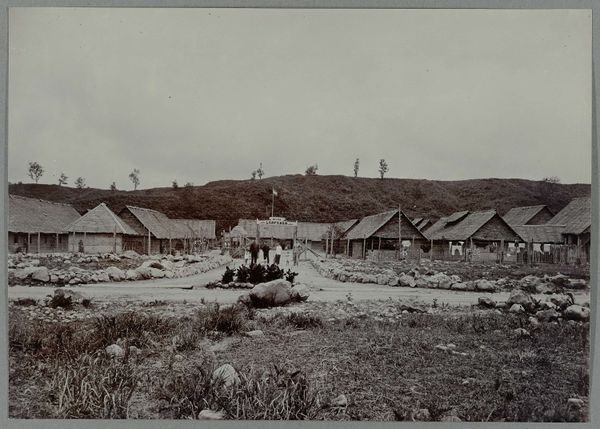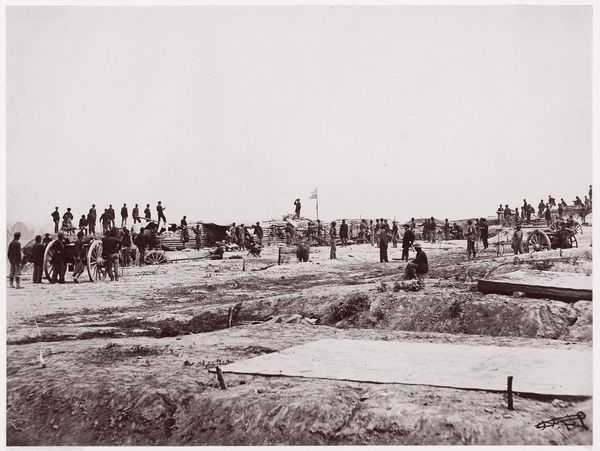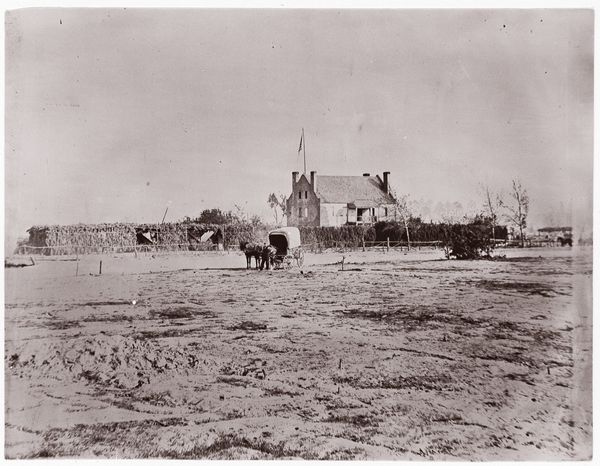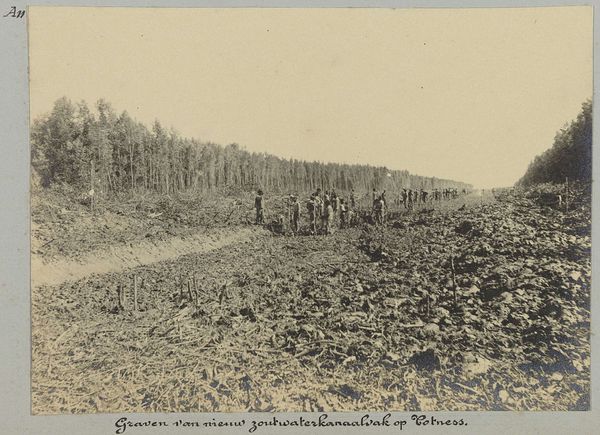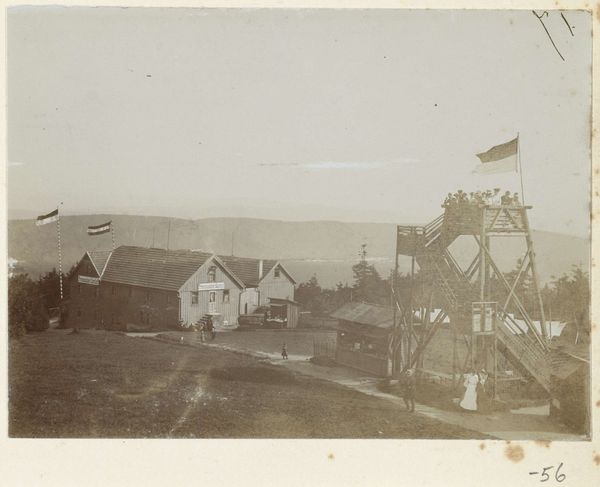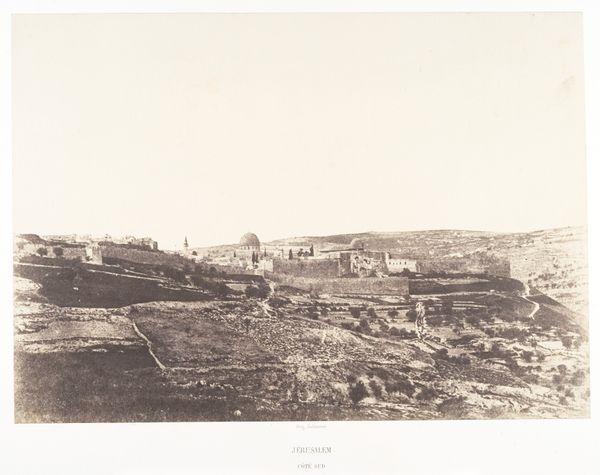
photography, gelatin-silver-print
#
pictorialism
#
landscape
#
photography
#
gelatin-silver-print
#
realism
Dimensions: height 82 mm, width 108 mm, height 363 mm, width 268 mm
Copyright: Rijks Museum: Open Domain
Curator: Let’s turn our attention to "The far west, Mission Junction," a gelatin silver print possibly made around 1908, now held in the Rijksmuseum. The artist is Geldolph Adriaan Kessler. What strikes you first about this work? Editor: I'm immediately drawn to the atmosphere—a stark, almost mournful scene. There's a vast, empty field of tree stumps that visually dominates the frame, dwarfing the train and town in the background. It speaks of environmental transformation, of exploited resources and uprooted populations. Curator: Indeed. The physical process involved in creating this image – the silver gelatin printing – highlights the mechanical means through which this landscape was captured and, in a way, consumed. Silver gelatin prints also have archival properties that lend them weight as historical documents that outlive their subjects. Editor: Precisely. It's also crucial to acknowledge that this photograph freezes a specific moment in the context of western expansion. We can assume from this vantage point that there are marginalized groups absent from the visual narrative whose displacement was essential to enabling this scene, where we see clear felled land awaiting capital projects like a train depot. What labour went into this moment? Curator: Labor that reshaped both the physical and social landscape. This transformation is highlighted by the formal realism the medium makes possible. Consider how this image participates in a rhetoric of "manifest destiny", using realism to naturalize specific claims of territory as though no labor or theft was ever involved. Editor: And it’s not only the labor. I feel it’s vital to acknowledge this photographic technique does create beauty, yes, and history, certainly; however, we must reckon with how that can also sanitize violence or loss. We’re prompted to confront what histories and whose struggles might lie just beyond the frame here, not visible but essential to this photograph. Curator: Yes, perhaps through its preservation we can find a more inclusive sense of responsibility. The act of looking—of examining the material reality of this gelatin silver print—allows us to bear witness to this difficult moment in history. Editor: Perhaps, by viewing photographs like this, we start confronting difficult colonial legacies that are critical for social discourse about labor and land ownership in a global context. The question isn't only about what is seen, but what is actively not shown to the audience.
Comments
No comments
Be the first to comment and join the conversation on the ultimate creative platform.
